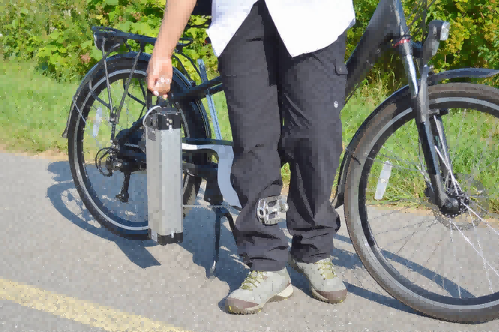Why Your E-Scooter Battery Won’t Charge After Sitting Too Long

Many riders find that after long-term use, their e-scooter battery doesn’t last as long on a single charge. Some even face a bigger issue: after leaving the scooter unused for weeks or months, the battery won’t charge at all.
This guide explains:
- Why e-scooter batteries lose capacity
- What causes them to stop charging
- Proven tips to extend battery life
Why Do E-Scooter Batteries Lose Capacity Over Time?
1. Battery Chemistry and Lifespan
Most electric scooters still use lead-acid batteries.
- Average lifespan: 2 years
- Deep cycle capacity: ~400 charge cycles
- Key benefit: low cost, recyclable, high safety
Lead-acid batteries use:
- Positive plate: Lead dioxide (PbO₂)
- Negative plate: Lead (Pb)
- Electrolyte: Diluted sulfuric acid
When charging, electrical energy becomes chemical energy. When riding, the reverse happens. Over time, the plates degrade due to side reactions, lowering capacity.
2. User Habits and Over-Discharge
- Deep discharge (riding until the battery is empty before charging) speeds up sulfation.
- Standard testing (10Ah battery at 5A for 84 min = 70% depth of discharge) shows that shallow discharges extend battery life significantly.
- Deep discharges can also cause plate swelling and potential safety risks.
3. Charging Temperature Matters
Lab conditions show the best charging environment is 77°F (25°C).
- Summer heat → risk of overcharge.
- Winter cold → risk of undercharge.
Both shorten battery lifespan.
4. Environmental and Material Factors
- No cadmium in modern lead-acid batteries → safer for the environment, but lifespan is shorter.
-
Sulfation process starts immediately after discharge.
- If not recharged quickly, crystals grow too large.
- Standard chargers cannot break them down.
- Result: reduced capacity and permanent damage.
How to Prevent “Battery Won’t Charge” Problems
Best Practices for Long-Term Storage
- Remove the battery if the scooter won’t be used for weeks or months.
- Turn off the circuit breaker to stop internal drain.
- Recharge every few weeks to keep electrodes active.
Daily Charging Tips for Longer Battery Life
- Store batteries at 50% charge when unused.
- Always use the original charger.
- Recharge at 30%, don’t wait for a full drain.
- Stop charging at 80–90% to reduce stress.
- Follow the right order: plug into the wall first, then the scooter.
- Charge in moderate environments (avoid freezing or extreme heat).
Final Thoughts
An e-scooter battery that won’t charge is often caused by long storage, deep discharges, or sulfation. With proper charging habits and smart storage, you can double the lifespan of your battery.
As battery technology advances, new solutions like lithium-ion packs and solid-state designs promise even longer life and better performance.
FAQ: E-Scooter Battery Charging Problems
Q1: Why won’t my scooter battery charge after sitting for months?
A: Likely due to sulfation on the plates. The crystals block charging, making the battery unresponsive.
Q2: Can I revive a dead lead-acid scooter battery?
A: In mild cases, special chargers with desulfation mode may help. But if sulfation is severe, replacement is usually the only option.
Q3: How often should I charge my scooter battery if I’m not using it?
A: At least once every 2–4 weeks to prevent deep discharge and sulfation buildup.
Q4: What’s the ideal temperature for charging my scooter battery?
A: Around 77°F (25°C). Avoid extreme hot or cold conditions.

